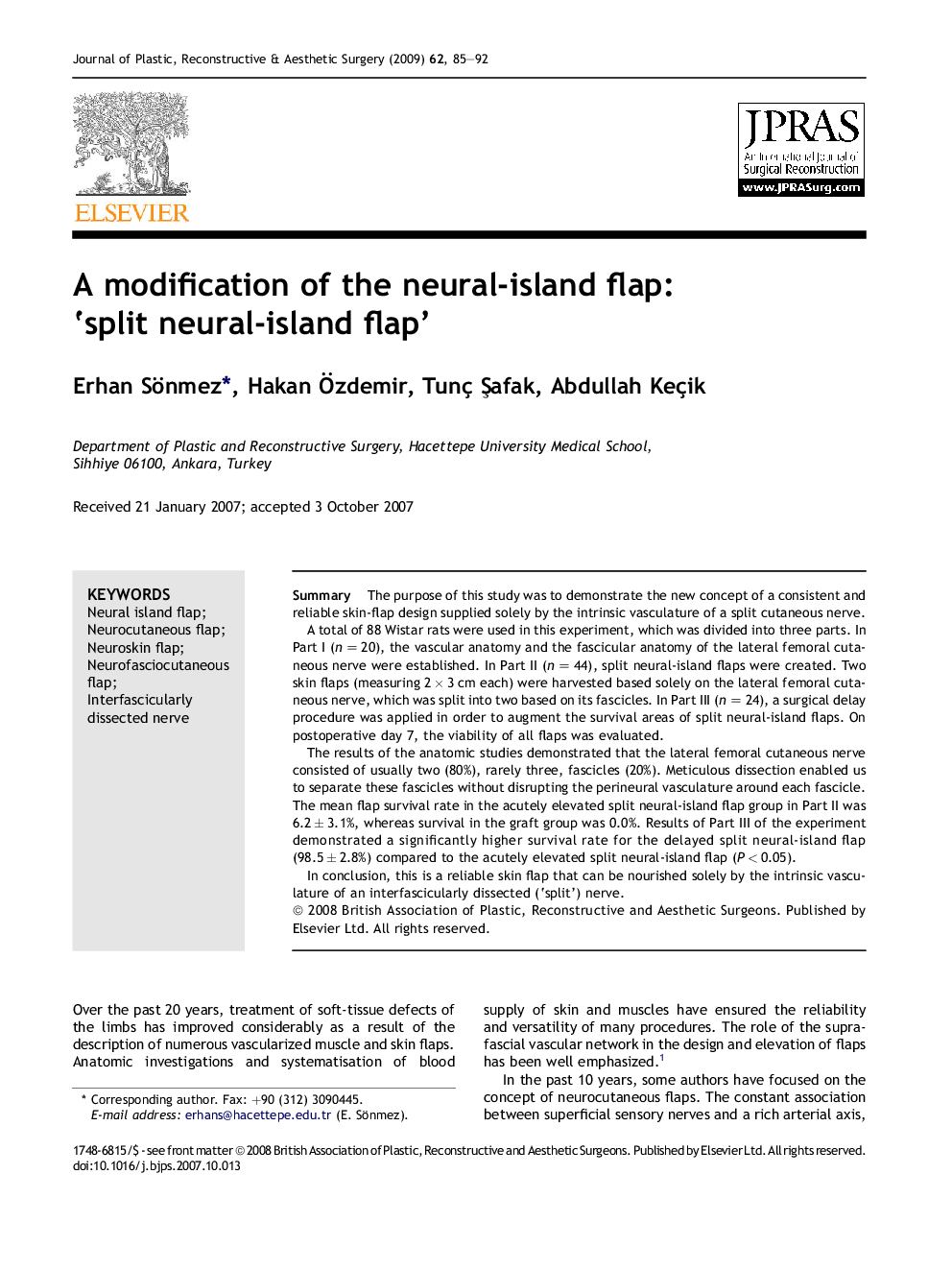| Article ID | Journal | Published Year | Pages | File Type |
|---|---|---|---|---|
| 4120427 | Journal of Plastic, Reconstructive & Aesthetic Surgery | 2009 | 8 Pages |
SummaryThe purpose of this study was to demonstrate the new concept of a consistent and reliable skin-flap design supplied solely by the intrinsic vasculature of a split cutaneous nerve.A total of 88 Wistar rats were used in this experiment, which was divided into three parts. In Part I (n = 20), the vascular anatomy and the fascicular anatomy of the lateral femoral cutaneous nerve were established. In Part II (n = 44), split neural-island flaps were created. Two skin flaps (measuring 2 × 3 cm each) were harvested based solely on the lateral femoral cutaneous nerve, which was split into two based on its fascicles. In Part III (n = 24), a surgical delay procedure was applied in order to augment the survival areas of split neural-island flaps. On postoperative day 7, the viability of all flaps was evaluated.The results of the anatomic studies demonstrated that the lateral femoral cutaneous nerve consisted of usually two (80%), rarely three, fascicles (20%). Meticulous dissection enabled us to separate these fascicles without disrupting the perineural vasculature around each fascicle. The mean flap survival rate in the acutely elevated split neural-island flap group in Part II was 6.2 ± 3.1%, whereas survival in the graft group was 0.0%. Results of Part III of the experiment demonstrated a significantly higher survival rate for the delayed split neural-island flap (98.5 ± 2.8%) compared to the acutely elevated split neural-island flap (P < 0.05).In conclusion, this is a reliable skin flap that can be nourished solely by the intrinsic vasculature of an interfascicularly dissected (‘split’) nerve.
